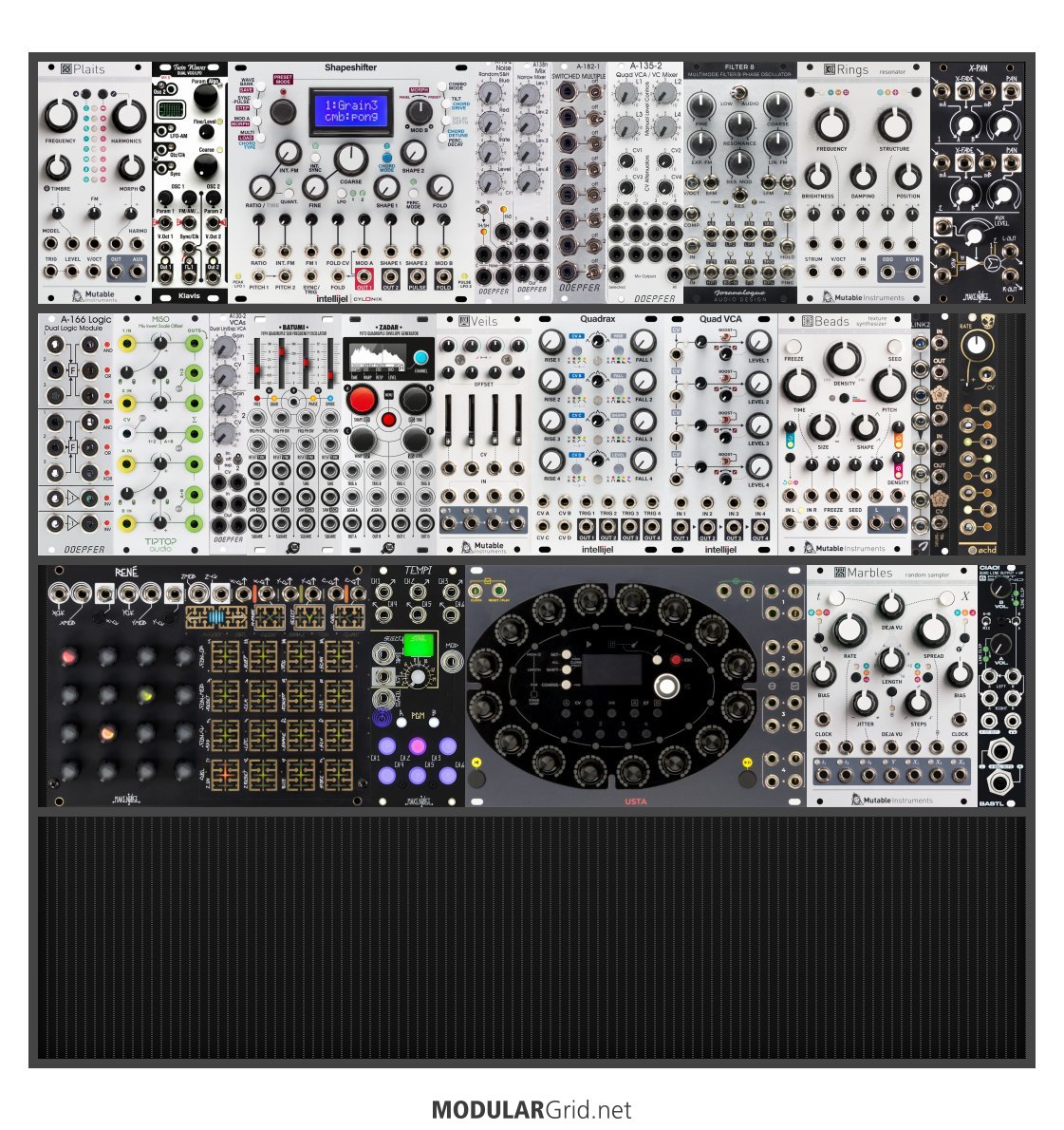[quote]
I’m wondering if this is a decent starting set up?
[/quote]
No
too many shiny big feature modules (chord, uO_C, disting ex, plonk, monsoon, merge) and not enough support modules
for these modules to really shine double the size of the case and fill the rest mostly with utilities - if you think of the modules as silverware that needs polishing - utilities are the polish
there are no vcas - you almost definitely want these - a quad cascading one, such as veils, is a good start - modulation and modifying modulation in different ways - matrix mixer (to combine different waveforms, vcas (to reduce/increase the amount of modulation)
how are you intending to sequence? are you intending to use a pitch follower? disting?
are you intending to use external effects only? no cv controlled reverb, delay, etc etc again disting?
I'd be really surprised if you need either 6 sample and holds or 8 lfos in this size case - or even a 6u
it's difficult to turn knobs whilst playing the guitar - an expression pedal interface (or 2) would be a good idea
I would not recommend any clouds clones at the moment - clouds 2 is around the corner - also almost all versions of clouds (including the original) need external modules to use them to their best - specifically attenuators/attenuverters for cv inputs
as an engineer I would suggest maths as a great starter modulation source - more control than ochd - and it's a great learning tool for modular in general - see the maths illustrated manual for 32 patching examples
I would also strongly suggest bigger case (6u/104hp minimum - unless you want case buying/building to be a hobby), fewer modules (don't worry gaps are fine - they will fill soon enough), more research - much, much more research... try reading a few dozen - "I'm a guitarist wanting to get into modular" threads - there are countless - here, muffwiggler, reddit... and think about what the general advice is! then start again
"some of the best base-level info to remember can be found in Jim's sigfile" @Lugia
Utility modules are the dull polish that makes the shiny modules actually shine!!!
sound sources < sound modifiers < modulation sources < utilities


